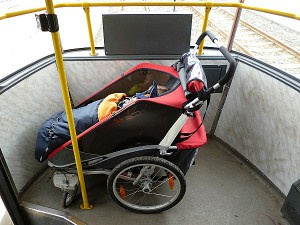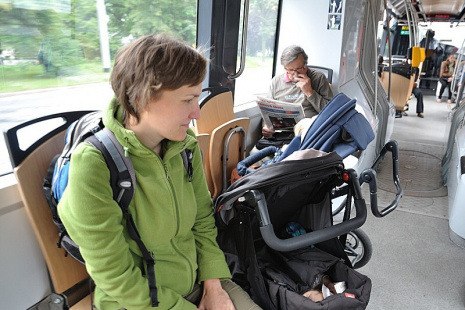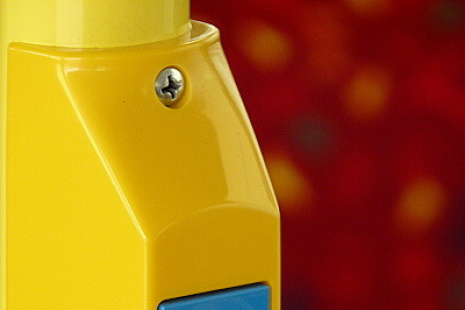Travelling with pram
A baby stroller with child is transported free of charge on all Prague Integrated Transport (DIP) transportation routes per the publication Prague Integrated Transport Tariffs (Fares).
The Prague Public Transit Company (DPP) wants to emphasize that it is always trying to provide the best possible services to those of its passengers who are traveling with strollers. This is one of the reasons why an increasing number of routes are now being served by specially-designed low-floor vehicles and our transit stops are being configured to improve vehicle accessibility and to provide barrier-free access to metro and railway stations. We know that adding escalators to stations can be of great help to passengers trying to maneuver with a stroller and we are aware of the difficulties presented by fixed stairs at platforms and where it is necessary to climb steps to board vehicles.
Until all physical barriers to the movement of strollers on our transport lines can be removed, we hope that passengers needing assistance will be able to get any help needed from fellow passengers and transport staff (recognizing that such help is optional and not an obligation). For public transportation to be successful as a service to all, those needing special assistance will unfortunately need to rely on a nearby fellow passenger or member of the transit staff to help. Such consideration is particularly important when there are crowded conditions; and, whenever necessary, we ask all of our passengers to give priority to wheelchair users.
Our vehicle drivers and other PID staff have the right to refuse to allow a stroller to board a vehicle under certain conditions (such as when a vehicle is overly crowded or when the dedicated space for the carrying of a stroller is already occupied by another stroller, wheelchair or bicycle).
Our bus drivers usually try to make it easier for passengers who are traveling with strollers to exit by opening the central door for them.
Traveling with Baby Strollers (and Prams) - how to do so
Before Boarding
At the stop, it is recommended that passengers wait for the arrival of the transport vehicle at that part of the stop where they expect the entry door to be located when the vehicle arrives. To signal drivers that you want to board, raise your arm.
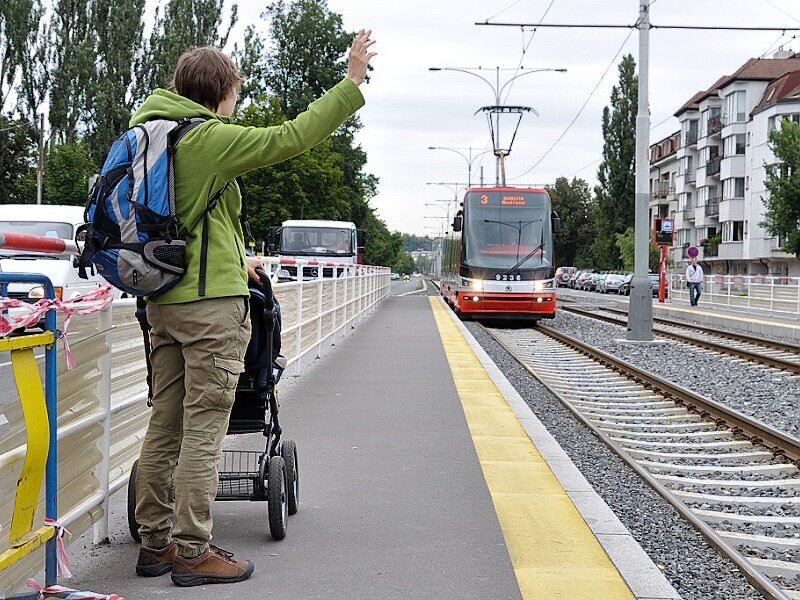
Boarding
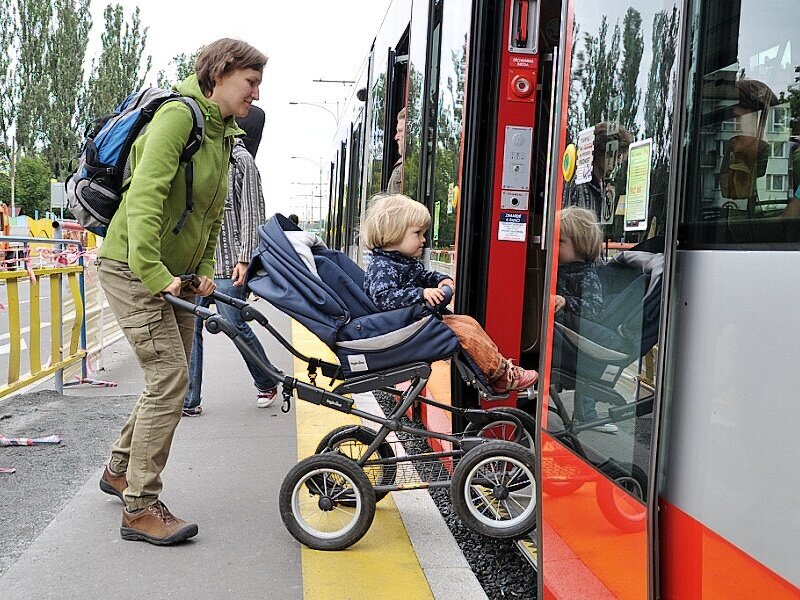 |
Low-floor vehicles - enter with the front of the stroller going first and push from behind. 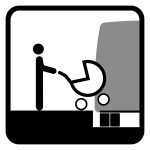 |
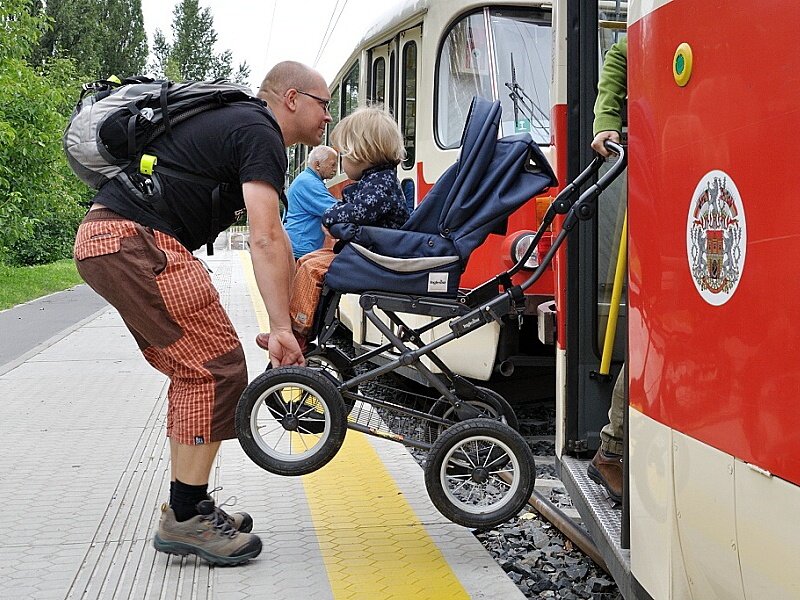 |
Vehicles with stairs – lift the stroller onto the vehicle using the front handle and pull the stroller up (hopefully with assistance to push the bottom part of the stroller up from behind) to enter the vehicle. 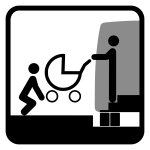
|
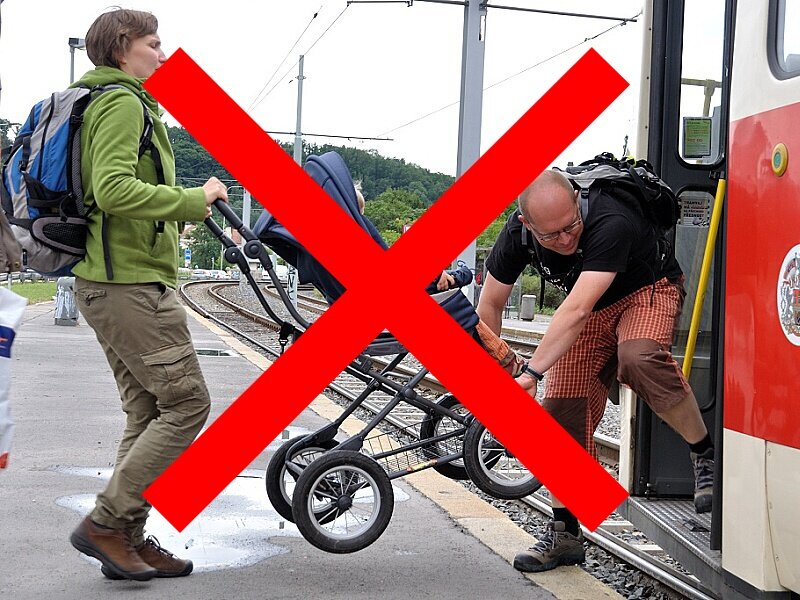 |
It is strongly recommended not to try and push the stroller up the stairs from the bottom (lower part) of the stroller – instead, always pull the stroller up the stairs from the front handle! |
Exiting the Vehicle
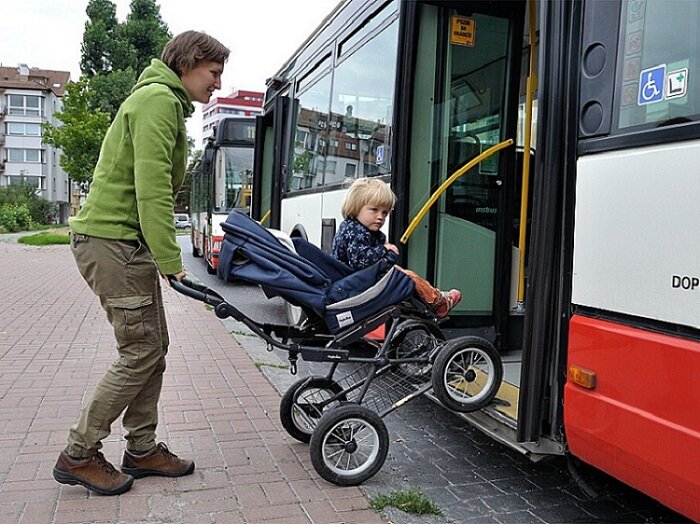 |
Low-floor vehicles - always back the stroller out of the vehicle by pulling it from behind you. You exit first!
 |
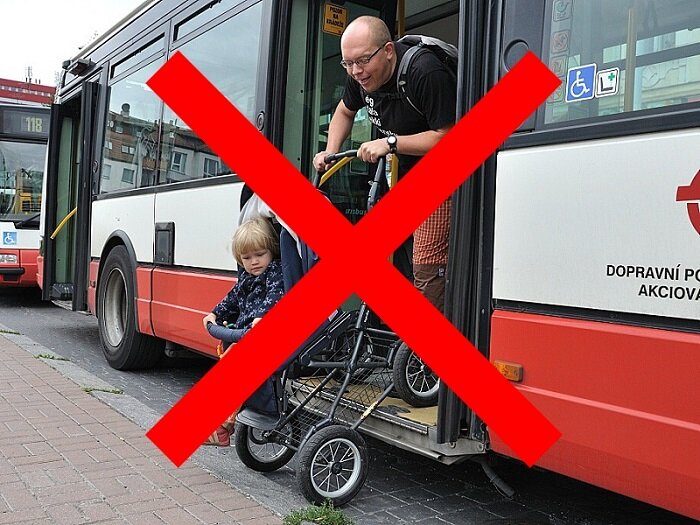 |
It is strongly recommended not to try and exit the vehicle by pushing the stroller out first. Always exit the vehicle before the stroller! |
Up-and-Down Fixed Stairs
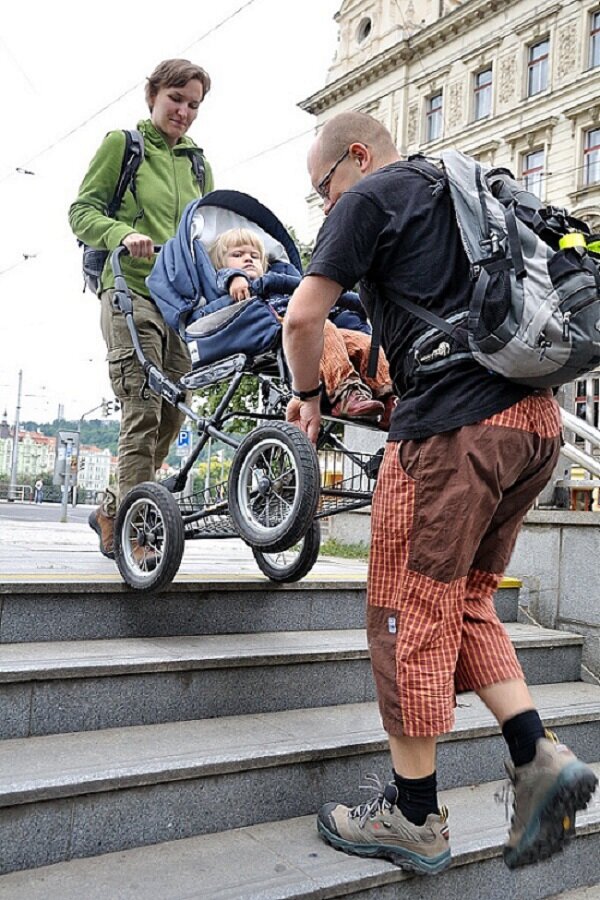 |
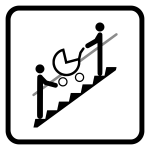 |
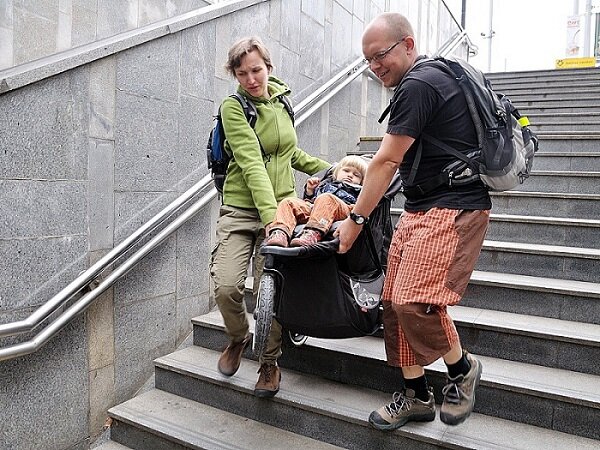 |
It is also possible to move up-and-down stairs by having one person holding each side of the stroller (pram). |
Using an Escalator
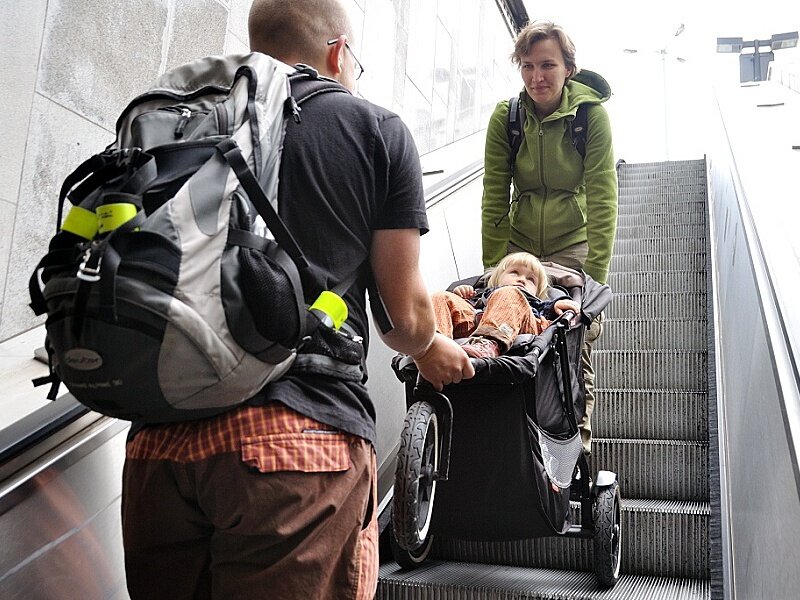 |
4-wheeled strollers and 3-wheeled strollers – As with a 4-wheel stroller, the first person is at the lower part of the escalator, having control of the handler. The second person is at the upper part of the escalator holding the front (wheel). The lower person has control (necessary for both directions of travel due to the transverse stability of the stroller). |
Placement of the Stroller in the Transport Vehicle
In terms of location on vehicle platforms, strollers have priority. Depending on the occupancy of the transport vehicle and the number of strollers (and wheelchairs) in the vehicle, it is possible to use the space set aside for strollers in various ways (in other words, if there are fewer strollers, a passenger can use the fold-down seat located in the stroller storage area; otherwise strollers always have priority for this area). We ask that passengers traveling with strollers (and wheelchair passengers) always try to find out about the upcoming stops of fellow passengers and pre-position themselves, as best they can, for their own stop. This will help avoid departure and boarding delays, which can impact transit line schedules.
We recommend that upon boarding and when getting ready to de-board, that you place the stroller in such a way as to minimize any unnecessary maneuvering of it (unless this would otherwise disrupt the movement of other passengers). Brake the stroller and, if possible, secure it against any sudden shifting (making use of the design of the stroller or hold it properly). If possible, lower the handle of the stroller so that it protrudes as little as possible into the space.
It can be difficult to control the direction of forward motion of strollers with rotating front wheels and this can be a particular problem if the recommended boarding procedures are not followed when boarding such strollers onto low-floor vehicles. Additional attention must also be paid when traveling with strollers for two children (next to each other / behind each other / above each other) and with some sportier versions of strollers.
Before Exiting the Transport Vehicle
The “Stroller” Button – Before arriving at their intended stop, it is necessary for passengers traveling with a stroller to signal the tram or bus driver of their intention to exit the vehicle using the related “exit” button (on some vehicles this is done by “double” pressing the button to signal the driver). For those vehicles with demand door control, it is necessary to press the appropriate button (on some types of buses, the door closest to the pressed stroller exit button is automatically activated). Then all that remains is to prepare to exit the vehicle (ask to clear the way, unbrake the stroller and possibly direct it to the door).
Metro
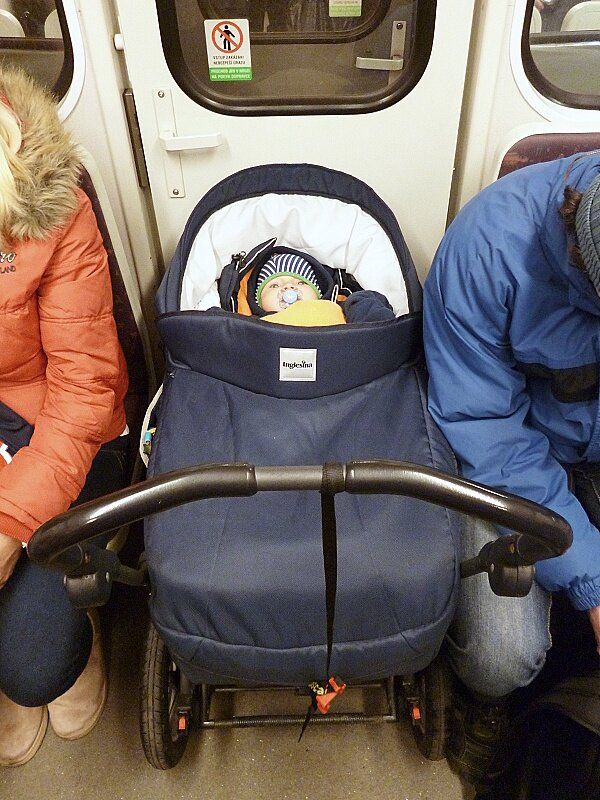
Certain metro stations are only accessible via fixed stairs.
On each subway (metro) train, a passenger with a stroller can enter and ride in the area (platform) inside each of the train car’s doors; however, only one stroller is allowed in each such platform area. Sometimes these areas can be crowded and in such situations, there may be other areas on the train which may be more suitable. Bicycles can also be carried on subway trains (as indicated with pictograms) and on the first and last platforms of each car. Additional space is usually provided on the first and last platform of the entire train for bicycles and this is usually the best place for wheelchair users. Another good place for a stroller is, for example, at the emergency connecting door at the ends of the cars or at the right-side door in the direction of travel (which is usually not opened).
The map of the metro system will indicate which metro entrances are most suitable for use by those passengers traveling with a stroller (in order of preference, the entry with an elevator and/or escalator will be shown; if neither are available, then the fixed stair is the only option).
Trams and Buses
As the PID renews its fleets with new vehicles, those with a low-floor option are continuing to be added.
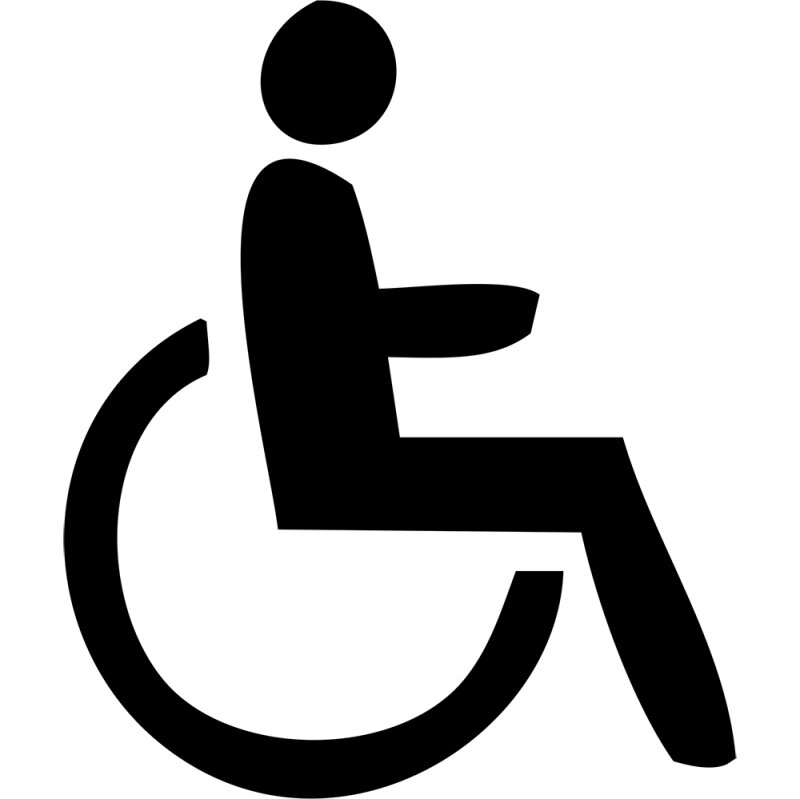 |
This sign in timetables indicates the guaranteed availability of low-floor vehicles on the route. |
A special H1 bus line has been set up for the transport of people with reduced mobility (including passengers with strollers).
Funicular
Due to the construction of the vehicles and the related construction of the stations, funicular cannot ensure barrier-free accessibility. Accessibility is possible for passengers with strollers only when they are accompanied by a second person (for assistance in carrying the stroller up-and-down the fixed stairs).
Ferries
With the exception of the P3 line (barrier-free vessel), travel on a ferry with a stroller is possible only with the accompaniment of a second person.

